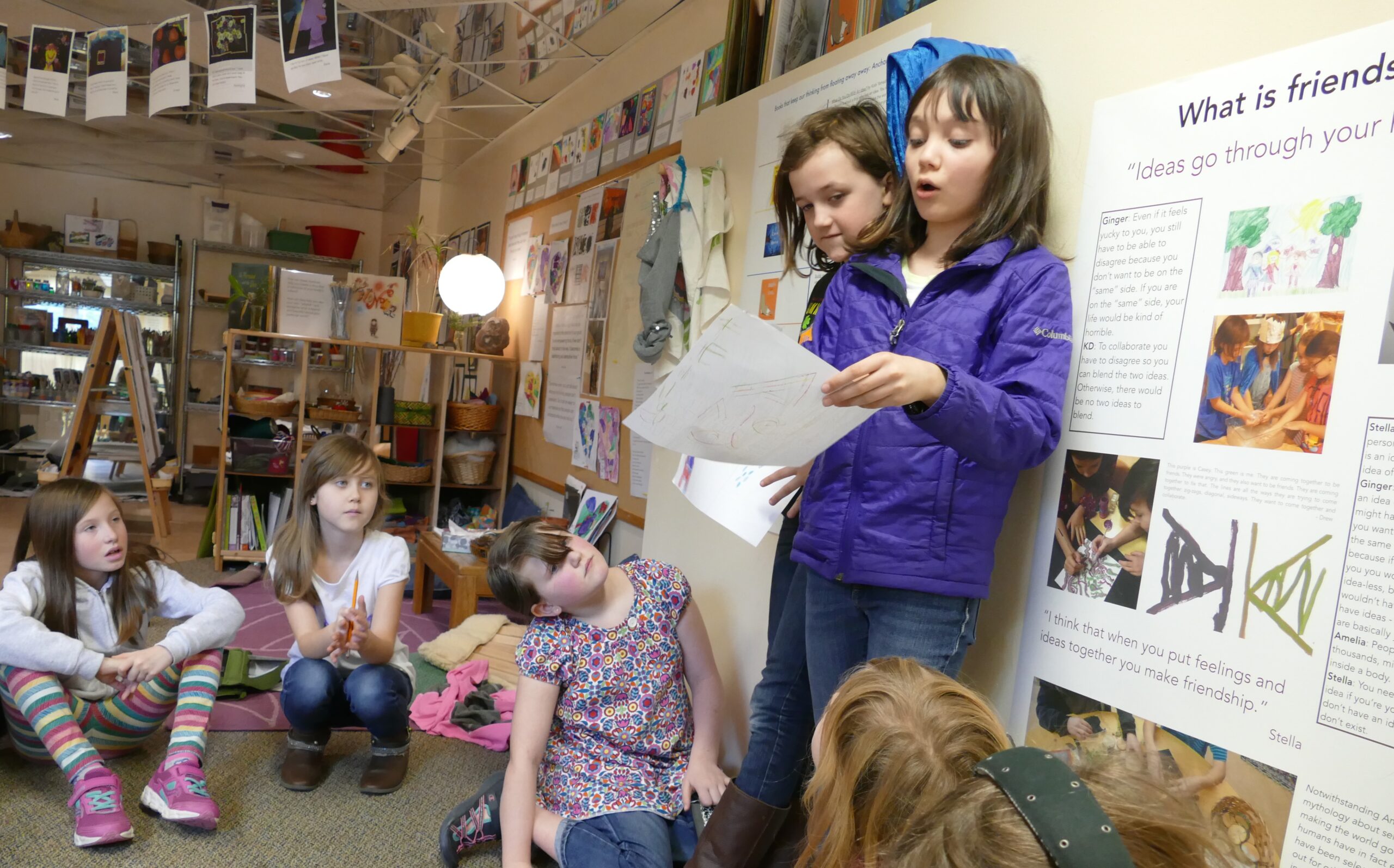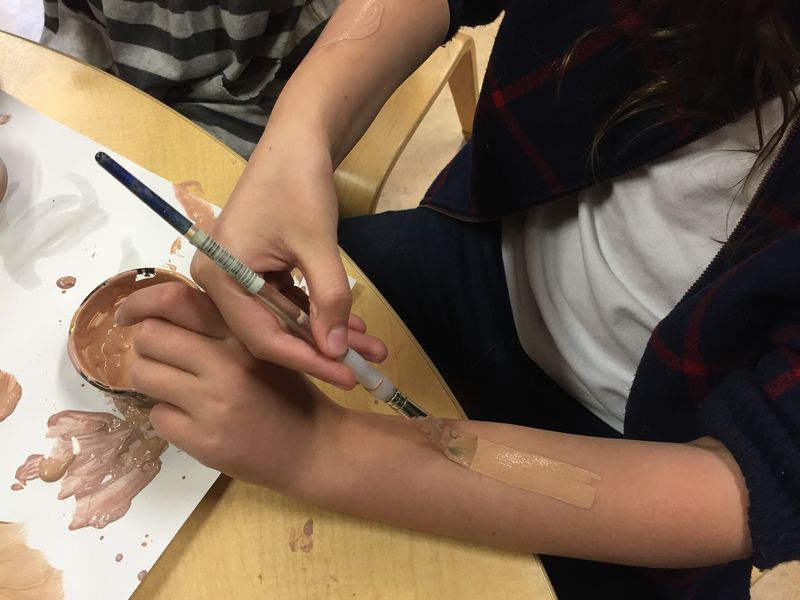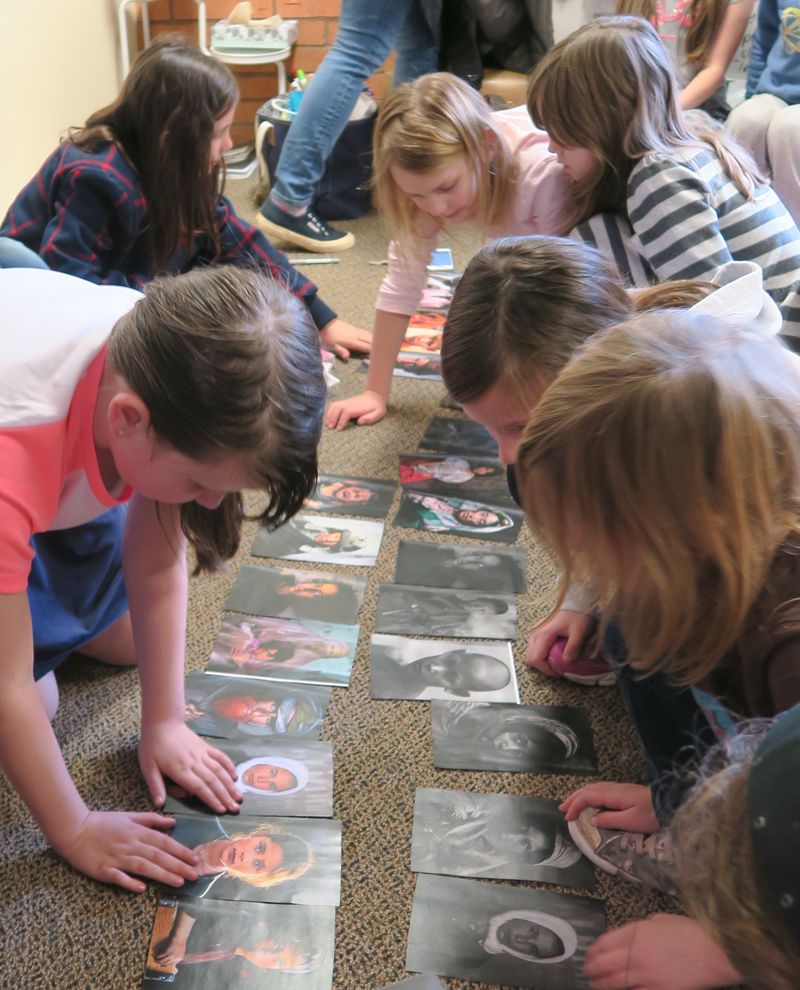The Power of Illusion

The opinion piece is a famously third grade writing assignment. It is, in fact, Common Core English Language Arts Standard 3.1: “Write opinion pieces on topics or texts, supporting a point of view with reasons”. It seems fair that children should learn to distinguish between fact and opinion and be able to craft an argument with cited evidence. So, in third grade at Opal we dutifully seek opportunity for the children to practice writing in this genre by constraining the curriculum in such a way that they can’t help but be fired up about something they want the world to know their opinion about. Anyone who has known an eight-year-old for any length of time will know that adults are not necessary to the development of the child’s opinions. They are full of them. Nor are adults necessary to the development of the child’s desire to share those opinions. What adults can offer is an invitation into the use of writing as a powerful tool to deliver those opinions, to pose problems, to create solutions and to influence change.
Too often, in our effort to get the children to produce proficient writing, we forget – we ignore – we deny – we overlook the fact that there’s no real writing without real reasons for writing. In our effort to get the assignment done, we reduce the complexity of the task into isolated parts. Broken down into its component parts, an opinion piece requires facts, opinions, knowing the difference, evidence, sentences, paragraphs. If the children cough up some organized collection of those items on paper, we call it good, and we move on. We cover this genre, and so many others, as ends in themselves.
Too often, we forget that we can offer the children the structure of opinion writing as a means of expression and change-making. Perhaps we imagine they will connect the dots later on in their lives — when they really have something important to say. But this approach limits the likelihood that will ever happen by missing the opportunity children need to keep these connections whole now. As school work and life experience drift apart, they often stay that way. Further, this approach limits adults’ opportunity to witness the powerful thinking and caring and desire to contribute that children are so capable of.
It is because we so often contrive assignments that produce ends with little meaning, that so often the work the children produce has little meaning. By limiting our expectations, we create the illusion that little can be expected. Reducing the disciplines of written communication down to their component parts may exercise the parts but communicate nothing. How do we create conditions that inspire children to develop these disciplines because they are necessary tools for sharing important ideas? If the disciplines were to be introduced as means that serve the meaning, what kinds of surprises might be in store?
We know that human beings, from birth, are driven to communicate as they seek connections and patterns in their environment and experience. Toddlers communicate their opinion about whether they think nap time is really preferred to playing at the park on a sunny afternoon without a single guided lesson. When toddlers tantrum, we get their meanings, and we understand their passions. And, over time, we offer them increasingly effective (and acceptable) means to communicate those passions. School can become a place where we incite that same kind of playground passion in order to create the demand for the skills of writing. But first, we have to believe that children have passions worth stirring, and that they are capable, powerful communicators who will make use of a structured genre when its value is evident.
Children are not innocent to what is happening around them. The Opal 3 children this year have regularly brought up connections about complicated things they hear on the news or the #blacklivesmatter banners they see on buildings on their way to school. They commonly voice concerns and questions and openly share their theories about what is going on and what could be different. This group of predominantly white children are trying to figure out what it means to be black and white when no one’s skin is really black or white. Curiosity is fertile soil for care. Inquiry nurtures empathy. And these are questions we want the children asking. So we are listening for this particular curiosity and making an effort to sustain it. How do we help them recognize what they care about and give them a platform from which to launch their ideas in support of that caring?
After multiple experiences with a variety of texts and materials, and hearing the children vocalize their desire to make a difference, we decided it was time to explore the complex terrain between fact and opinion. Like black and white, rarely are life’s distinctions so crisp, yet, in our work with young children, we often insist on simple terms. Again, by offering simplicity, we create illusions that simplicity is necessary and we perpetuate our own mythologies about the capacities of children.
We chose to extend curiosity by introducing the concept of race with this video:
We asked the children to what extent this video included information that might be fact or opinion.
Teacher: Is race a fact or opinion?CN: There was an opinion that races should be separate, they treated it like a fact.EC: It’s something else.DP: If you put it together, there would be a 3rd thing. We could name it.EC: There is fact, opinion, and a third thing
Teacher: Can you be wrong about what you see with your eyes?DP: In The Black Book of Color he could feel the way a strawberry tasted.Teacher: Could it be based, these race groups, on a mistake?SE: In my perspective–why people put them into groups… I don’t know how to explain it, when they do it, it takes people into their own perspective.Teacher:Does thinking of Old Turtle and the Broken Truth help you explain it?SE: They fight against each other.GB: In history, people thought they were better than one another. They only had the “you are loved part” and not the “and so are they” part.CN: You know what’s a short rhyming way to say you don’t care how much melanin someone has? Melanin schmelanin! If there wasn’t such thing as melanin, there would be no such thing as races.SE: It’s an assumption.Teacher: Drew, do you think ‘assumption’ might be that thing in between opinion and fact?AB: You treat assumptions like facts.GB: They might even be facts. People can say, “No, you’re not right”.Teacher: I think assumption may be that third thing. Can we test this? Think about this? I’m making a theory – I’m not really sure.KN: I think theory might be in the middle. You have a theory and it’s an opinion, someone else may have a theory and it’s a fact.GB: Sometimes you say you have a theory, but you have an assumption.Teacher: And sometimes we think something’s a fact, and we are totally wrong. Like when people believed the earth was completely flat. We know that’s wrong now. But it used to be a fact.
Children are more than capable of identifying and examining all the areas of grey. The more we allow them access to that uncertain terrain, the more they show us how capable they are. The more opportunities we offer them to stretch their capacities in an effort to make change they wish to see, the more engaged they become with their own abilities and the contributions of others. They develop agency by exercising agency, not by practicing obedience.
SE: I jotted down words that might be good like actions, identity, race, all the things that are the big words we talked about..genetics and skin color. All the big words that meant a lot, because you can make a story, a poem, they are big words that put a lot out there.Teacher: What do you want to put out there?SE: People are hurting, they are being judged by their skin color.OR: I’m wondering what white means. We don’t really know what that is—where white ends and black starts?EC: I’m thinking that because there are more white people in the world…OR: I’m wondering if people who live with darker skin people think there are more dark skinned people in the world, because they are around more?
Here the children begin to ask about population statistics because it makes sense to start to wonder about the size of groups when trying to understand the balances power. They also begin to voice a desire to put their words down and “put them out there”. Now they are ready for the structure of genre.
The following day, we offer them this video from the 100 People Project:
This beautiful video helped them imagine their place in our global community. AS reflected on the quote at the very end by saying, “They used that quote because if you think about how differently people live in the world you might think we all live on different planets. But we don’t.”
So, now armed with these statistics, they are ready to write. They have been asked to think about what these statistics make them care about and to write about that. How are things different from what they would like to see in the world? What changes do they imagine would make a difference? How will they convince others to think and care with them? We’ll share some of their writing with you in the coming weeks.
It was AS who called everyone out on the ultimate illusion. As she watched these videos and participated in dialogue with her peers, she offered the last comment of the day: I have been thinking. If everyone is different, what is ‘normal’? Imagine what might happen if we all routinely asked that question in school? If the rich, robust promise of children and childhood were our focus – rather than the flat and empty promise of standardization and normalization we (sometimes) call Common Core – what might we learn to believe in? What might we want to share with the world?



Susan, I knew this was your voice the second I started reading. Your belief in the capacity of children still inspires and moves me today. I really hope you are writing a book to inspire teachers everywhere! You need to be at the fore front of the movement to change education….. I think you actually are. Would love to hear more from you.